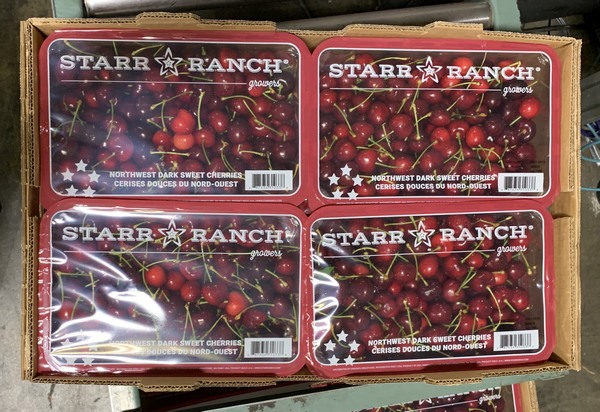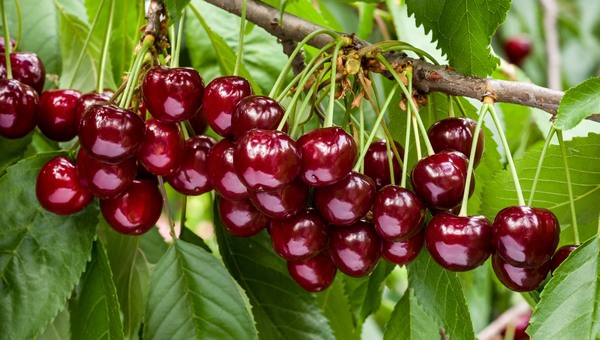 Despite frost damage during bloom, Washington state is looking at a very marketable 2020 cherry crop. “Frost diminished the crop by 25 percent, but according to estimates, the state still expects to pick 18 to 20 million cases of cherries this summer,” says Dan Davis with Starr Ranch Growers. Looking at it from the bright side, the frost adjusted the crop and increased the fruit size. “With temperatures in the high 60s and low 70s these past several weeks, it has been ideal weather for the trees to grow a high-quality cherry.”
Despite frost damage during bloom, Washington state is looking at a very marketable 2020 cherry crop. “Frost diminished the crop by 25 percent, but according to estimates, the state still expects to pick 18 to 20 million cases of cherries this summer,” says Dan Davis with Starr Ranch Growers. Looking at it from the bright side, the frost adjusted the crop and increased the fruit size. “With temperatures in the high 60s and low 70s these past several weeks, it has been ideal weather for the trees to grow a high-quality cherry.”
Another benefit of this crop size is that during times like these, a slightly smaller crop will be easier to market. “With a large crop, we would have been fearful for profit in this environment, but this volume allows for plenty of promotional opportunities in combination with reasonable price expectations,” commented Davis.

Minimal overlap with California
Washington’s cherry crop bloomed about 7-9 days earlier than normal. “Initially, we worried about a compressed crop, peaking all at once. However, the weather we’ve had post bloom has resulted in a better spread over the season. We no longer expect a short master peak, but instead will have solid volume for a month,” Davis said. Harvest is expected to start around June 1st and will peak from mid-June to mid-July. After that, volumes will slow down, but fruit should still be available for another four weeks. California is in full swing right now and usually ships product until June 7 or 8, so the overlap between California and Washington is expected to be minimal.
Getting the crop picked does not seem to be of big concern despite travel limitations. “We have been working with H-2A guest workers from Mexico and Latin America for years and many of them are returning. Since they’ve worked in the US in previous years, they are already in the system, which made it relatively smooth to bring them back.

Airfreight is bottleneck
Typically, Starr Ranch sells 70 percent of its cherries in North America and 30 percent in the Asian market. “Our retail partners in Asia have indicated they are looking forward to Washington cherries,” Davis said. “However, airfreight will be the bottleneck this season.” Usually, cherries are transported in the belly of passenger aircrafts, but the number of flights and cargo availability is so limited, forcing Starr Ranch to look at alternatives such as charter flights. “Despite the more limited transportation options, we still expect a good volume of cherries to make it into Asia this summer,” he said.
In spite of the challenges the current environment brings, Starr Ranch is excited for the cherry season. “Cherries are a summer fruit and people will still want to celebrate holidays and get together during summer. With some states already moving back towards a new normal, we are hopeful consumers are looking forward to seeing this popular summer fruit on the shelves.”
For more information:
Dan Davis
Starr Ranch Growers
Tel: +1 (509) 961 1919
dand@starranch.com
www.starranch.com
